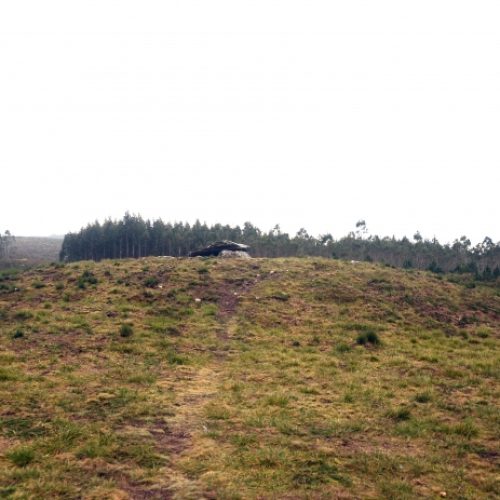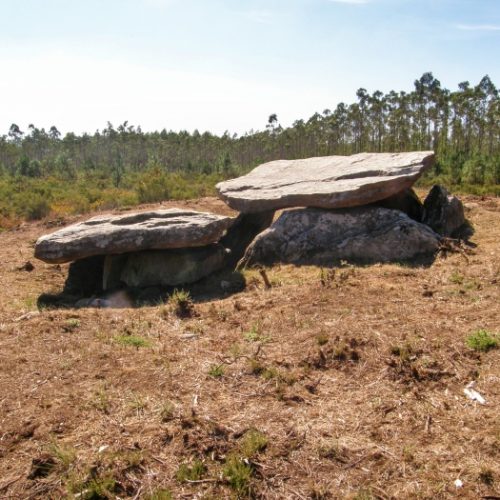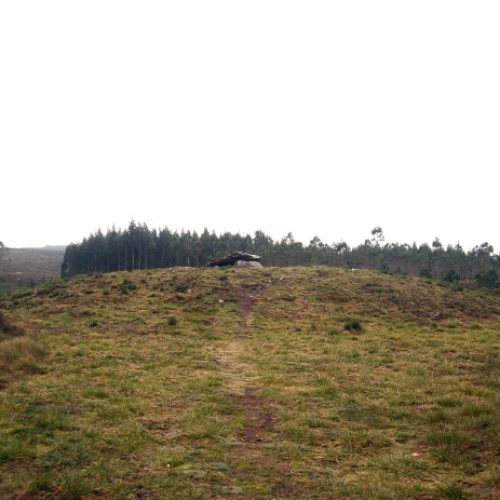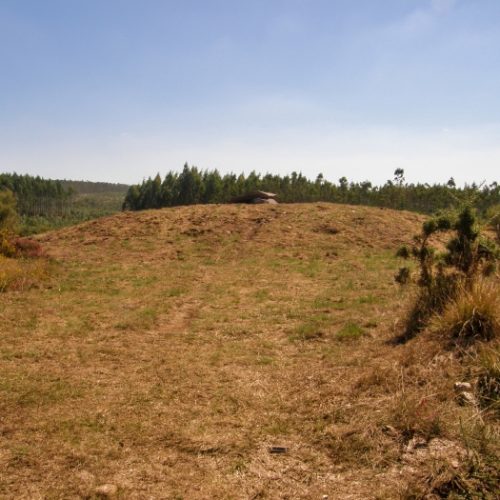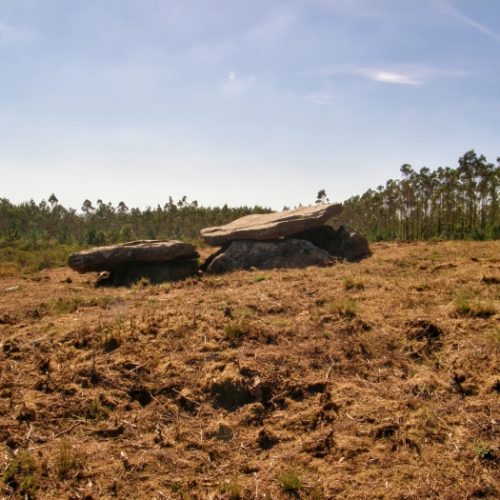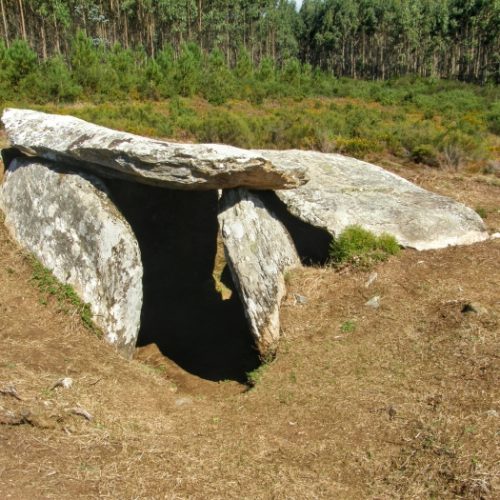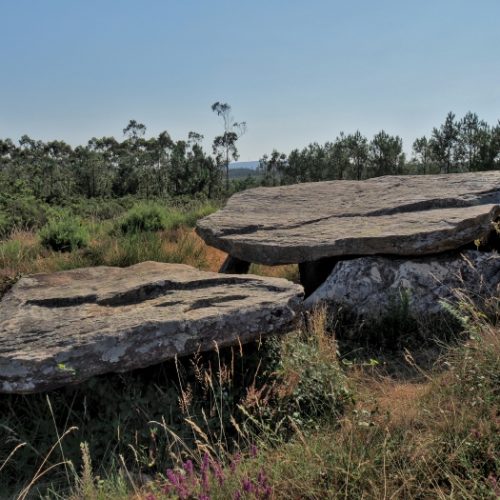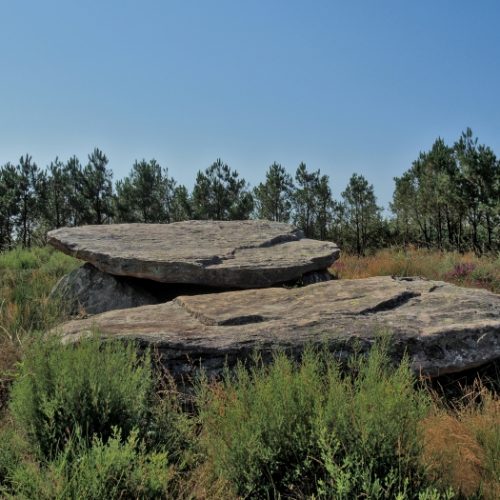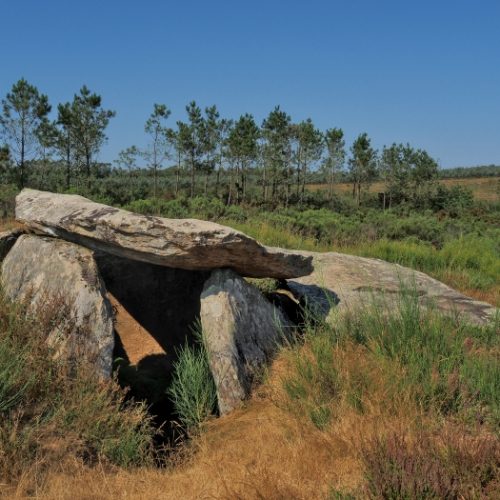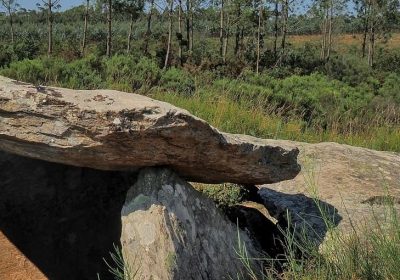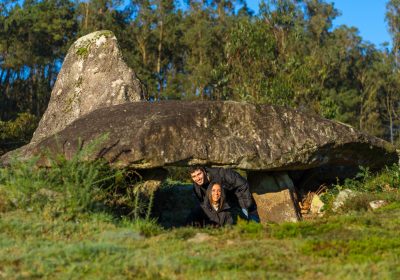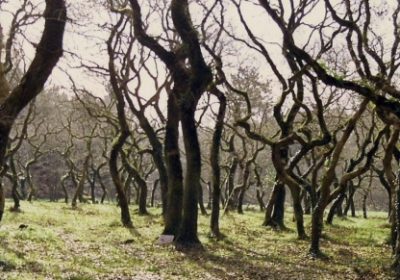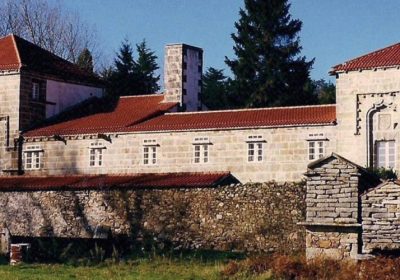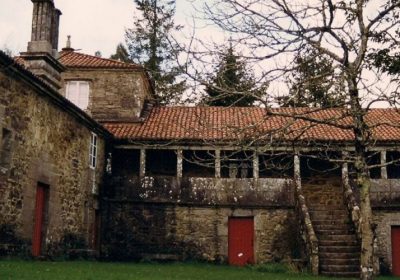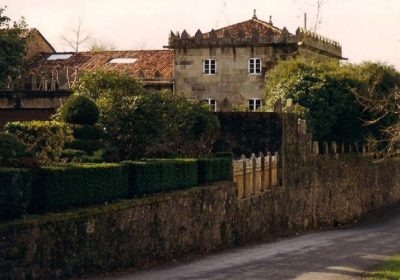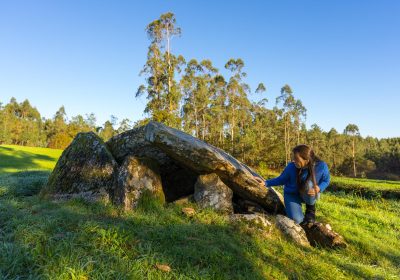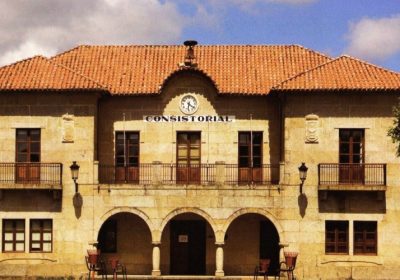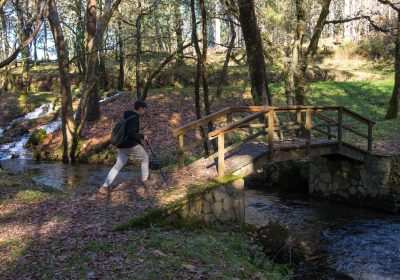The tomb of the legendary Brandomil
Arca da Piosa has the privilege of having been sung by the bard of Bergantiños Eduardo Pondal. The author, in his poem “Á hora en que o doce luceiro”, included in “Queixumes dos Pinos” (1886), speaks of the dolmen as the tomb of the mythical warrior Brandomil. With this fictitious reference he intended to glorify the past of Galicia by taking the Celtic world as an element of prestige and turning some names of places and parishes of Costa da Morte, such as Brandomil or Ogas, into mythical heroes of prehistory.
But the Ark is also an imposing dolmen, one of the largest in Galicia, built with huge slabs of gneiss, some weighing more than six tons, brought from a distance of more than a kilometer and a half, since this type of stone does not exist in the immediate area.
On the other hand, the megalith preserves quite well its dolmen and the volume of the earth mound that would have been covered by a stone armor with quartz visible from a distance. Inside the chamber and corridor there are traces of black and red prehistoric paint on three of its slabs and a cross, probably modern, engraved on the roof.
This dolmen holds more surprises, and that is that the corridor is covered by two lids, instead of one. It seems that the original stone, with undulating roughness, broke in half at some point during its use and it was decided to place a new lid on top of it instead of removing the ravine. A patch, or could the original stone really not be removed because of its symbolic importance?

